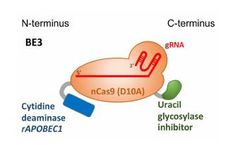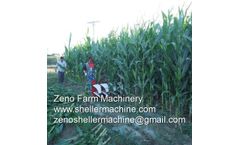Refine by
Insecticides Articles & Analysis
135 articles found
In commercial applications, liposomes have been employed as carriers in slow-release or delayed-release insecticide formulations, offering an environmentally friendly and safe method for delivering active agents into the plant vascular system. ...
Another area of research that has shown promising results is the use of Japonilure pheromone in combination with other control methods, such as biological control agents or insecticides. By integrating pheromone-based monitoring and control tactics with other pest management strategies, researchers have been able to achieve more sustainable and effective pest control outcomes. ...
The pesticide/herbicide residue analysis services cover: Raw Agricultural Products Processed Agricultural Products Plant Water & Soil Pesticides/herbicides that can be tested include: General Herbicide Alachlor, Atrazine, Benefin, Bromacil, Butachlor, Butylate, Cycloate, Eptam (EPTC), Ethalfluralin, Hexazinone, Isopropalin, Metolachlor, Metribuzin, Molinate, Norflurazon, Oxadiazon, ...
Biomanufacturing pest control products For example, the biosynthetic pyrethric acid has been widely used in pyrethrin ...
Biomanufacturing pest control products For example, the biosynthetic pyrethric acid has been widely used in pyrethrin ...
The RNAi-produced corn could resist the rootworm without the need for insecticides, reducing economic losses and environmental impact. However, challenges remain. ...
Biomanufacturing pest control products For example, the biosynthetic pyrethric acid has been widely used in pyrethrin ...
In recent years, the use of pheromones has gained significant importance in pest management systems as it offers a more eco-friendly and sustainable alternative to conventional insecticides. The controlled release of pheromones using gel materials has emerged as a promising approach for effective pest management. ...
These properties make oleyl alcohol an ideal ingredient for pheromone formulations, as it does not cause harm to non-target organisms, making it an attractive alternative to traditional insecticides. Another advantage of oleyl alcohol is that it has a high level of purity, which is essential for the effectiveness of pheromones. ...
The mode of action of insecticidal proteins varies depending on the specific protein and the target pest. ...
Thrips, ah. the little insects that can pose annoying issues for cannabis cultivation. Thrips are minuscule, elongated insects that feed on cannabis plants’ sap, resulting in discolouration, crooked development, and decreased yields. But chill, fellow growers! It is possible to effectively prevent and treat thrips damage with the correct information and methods. The impact of thrips on ...
Whether you are new to growing indoors or a seasoned professional, one thing is for certain – you can’t take your eye off the ball with pest control! One of the most common pests to plague our grow rooms are the white aphid. Secondary to those are black aphids, which are very similar. If you’ve not experienced an aphid attack yet then count yourself lucky. There is no surefire ...
As a cannabis grower, you will hopefully be aware of the importance of maintaining strong, healthy plants. However, one little pest, the infamous Russet Mite, can seriously harm your crop. These minuscule bugs can significantly damage your cannabis plants, resulting in lower yields or even crop loss. But fear not—you can effectively prevent and treat russet mites if you have the correct ...
Mealybugs are small but mighty pests that can settle on your plants. If left untreated, they can spell disaster! Nobody wants that now do they!? As with many aspects of growing plants, pest prevention is a great way to minimise the likelihood of infestations. In turn, this saves wasting time and resources treating mealybug populations in your grow space. Although mealybugs can affect outdoor ...
Fluralaner is a systemic insecticide and acaricide that can be administered orally or topically. ...
Introduction to Insecticides Insecticides are a class of chemicals mainly used to control agricultural pests and urban sanitation pests. ...
In India, thousands of tonnes of crop gets destroyed every year due to improper use of insecticides, pesticides, plant growth regulators etc. This destruction of crop can happen either if a farmer uses these chemicals without any scientific knowledge by themselves or by relying on their local shops. ...
Worldwide these result to 16% of all the insecticides and 7% of all herbicides used. Cotton is also a very thirsty crop adding more pressure on our natural resources. ...
At high concentrations CO2 can also act as an insecticide, preventing pests from attacking produce.For cooked meats, CO2 concentrations of at least 30 % are required to preserve the meat for as long as possible. ...
Usually, the farmers increase their farm productivity in this farming by high doses of manure or other modern inputs, including fertilisers, high yielding variety seeds, insecticides, pesticides,modern grain thresher machine and many more. In commercial agriculture, farmworkers have to use many modern technologies to increase farm productivity. ...












